Polishing with the 4″ Spot Pad for Better Results!
by Todd CooperiderWhen many detailers and / or enthusiasts are first starting out with their new buffers, pads, and polishes, there’s one critical tool that they typically miss out on…the 4″ spot pad! And it’s not just the beginners either, because unfortunately there are still a lot of detailers out there that haven’t adopted them into their arsenal.
I simply can’t imagine having to do a paint correction detail without them, and I’ll guarantee you that if I had to, the quality of work in key areas would be reduced significantly. Just about anybody can polish a large, flat panel to perfection, so what can separate a good detail job from a stunning one then would be how well all of those small and tight areas have been polished. It’s similar to golf…hitting the long ball is for show (polishing flat surfaces), but putting is for money (polishing tight areas). So get yourself some 4″ pads and backing plates and practice your putting!
Regardless of whether you primarily use a rotary or a dual action polisher (or a combination of both like I do), the quality of work that you produce can be stepped up by using 4″ spot pads and taking your time to finesse all of those tight areas the same as you do on the parts that everybody see (the hood, trunk lid).
When you try to force a large pad into a small area, you will be faced with two different possibilities. The first is that you won’t be able to make full contact because you need to angle the pad to try to work the area, and in the process you won’t be able to get as good of a correction or finish depending on what step you’re doing. I’ve seen plenty of videos where the technician is using old-school 8″-9″ pads and quickly going over these tight areas with the edge of the pad, and in the process they only have a few seconds of contact between pad and paint. This is not polishing, and the surface will not be refined. The second, and the one you definitely don’t want to be faced with, is that you end up damaging an adjacent surface that you hit with your monster pad!
If I’m working an area with heavy defects around a side marker light for instance, and it’s located close to an edge or seam, then I will slowly and methodically work that area with a 4″ pad to get it as refined as the big, flat surfaces on the rest of the car. Sure it takes time, but the reward comes at the end when you know that the paint is as good looking as you can get.
Another benefit of using a 4″ pad in all of these tight areas is the control that you get. It’s much easier to control a small pad in a confined area than it is a large one!
Here are a few examples of the areas on the car that will typically benefit from using a 4″ spot pad:
- Around door handles
- On A-pillars
- On mirrors
- Around emblems
- On headlights and taillights
- Front and rear bumpers
- Any small and tight areas that could easily be damaged by a large pad
Granted I work on a lot of exotics that have more angles and tight areas than your standard daily driver, but these areas exist on just about any car out there. When DJ Mayo and I worked on a massive Rolls Royce Phantom together, we still found plenty of areas that required the 4″ spot pad, regardless of the fact that it was as big as a ship!
Most front bumper areas have some (if not most) places where the 4″ would work best
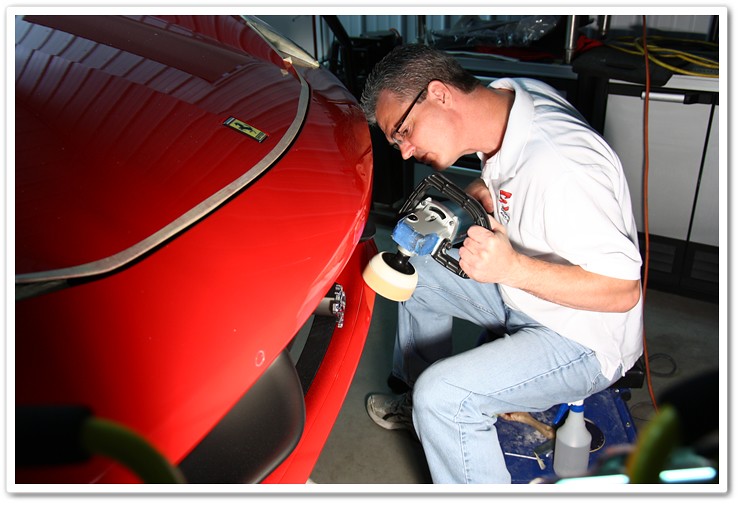
They’re a must when polishing mirrors.
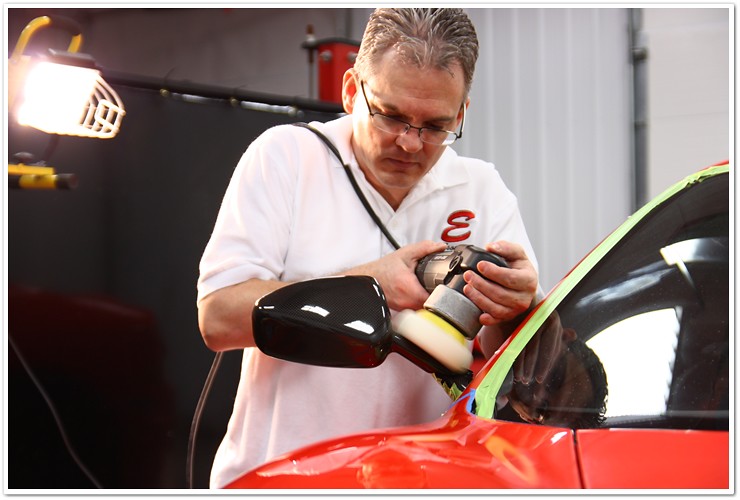
Use them around side marker lights.

In general tight areas.
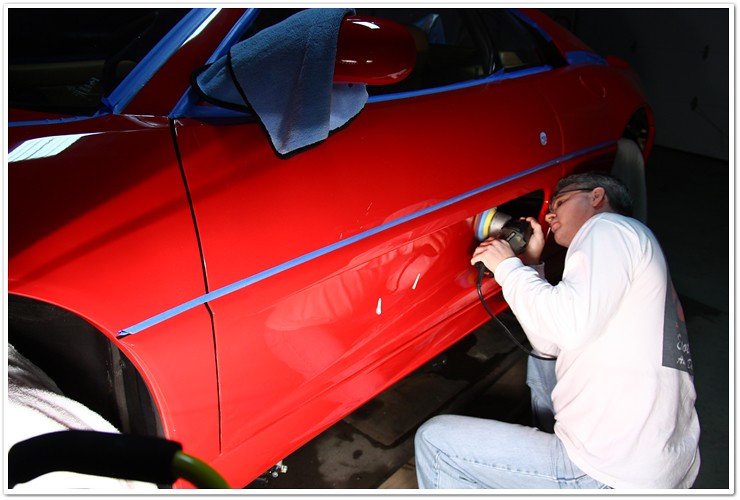
Rear bumpers (back and side) are prime candidates!
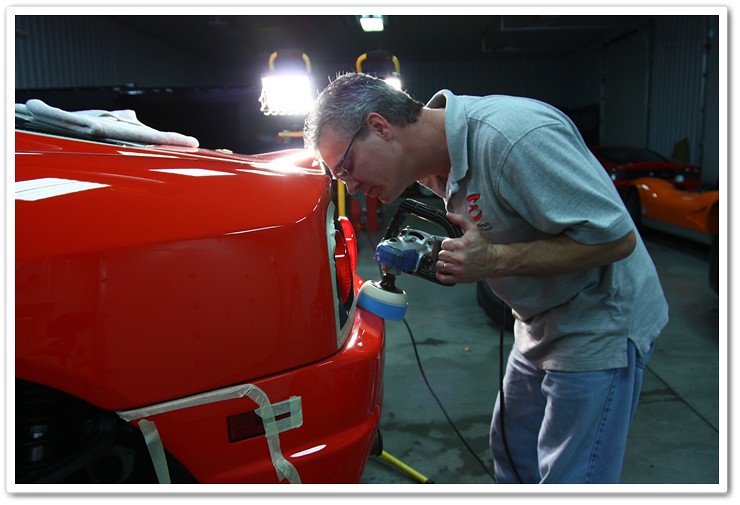
Headlights and taillights.
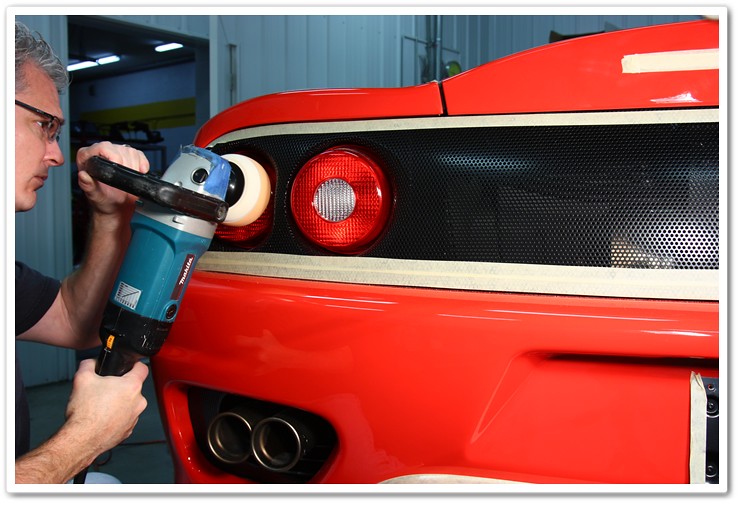
And other tight areas where you need a lot of control…
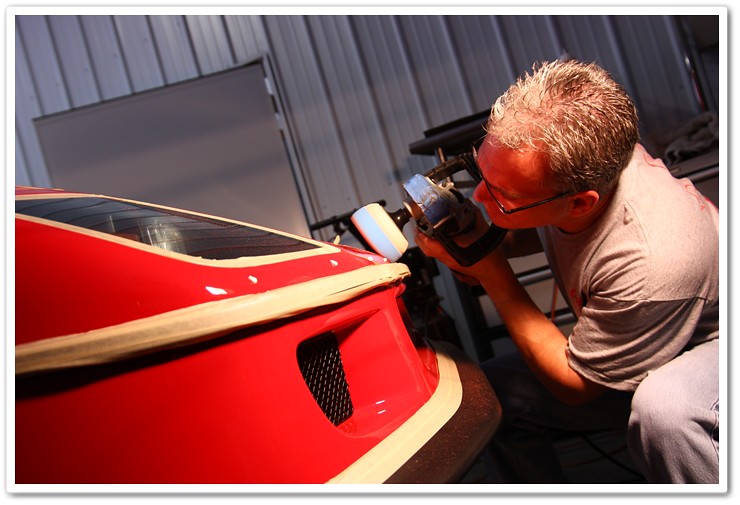
So if you’re looking for ways to step up your game and your results, and you don’t currently have 4″ spot pads (and appropriate backing plates) in your arsenal, then do yourself a favor and start working with them. Your work will improve, and your cars and / or clients will be happier as a result!
Related Posts
- Paint Correction Detail: 2009 Porsche Carrera S
- Ferrari 458 Italia Paint Correction v2.0 by Todd Cooperider
- 2008 Z06 Vette in Velocity Yellow Tintcoat by DJ Mayo of Reflections Detailing
- Ferrari F40: 60 Hour Restorative Detail by Todd Cooperider and Craig Reed
- Full Detail and Paint Correction: Ferrari 458 Italia by Todd Cooperider of Esoteric Auto Detail










Thanks for the insight on the tight areas. Excellent work as should be for the nature of the vehicle. Could i ask how to go about hitting the lip around the tail pipes or areas like that where you can’t fit a polisher? Without removing parts from the car if possible? Thanks Todd
Amazing work you do!!
Thanks Brian.
If I can’t fit a polisher in a tight area, and disassembly isn’t an option, then I will polish the areas by hand as best as I can…usually with 4″ spot pads and Megs M105 / M205.
Which 4″ pads do you recommend from Detailed Image? I’ve wanted to purchase a couple of these ever since we talked at the Arthritis Foundation show. When it comes to ordering pads I get analysis paralysis and don’t end up placing an order. Any help would be appreciated.
Tim
Tim,
It depends on what polishes you regularly work with. For me, I mostly use the 4″ Cyan pads (usually with M105), Tangerine pads (with both M105 and M205, or sometimes with PO203S), and black pads for use with 106FA.
Todd
Todd, that sums up alot of my current thoughts and questions. Dremel should come out with a backing plate… lol. with nickle size pads. Agian, Thanks for sharing
Newbie question. I had my first experience with the 7424 laying down a coat of Blackfire Wet Diamond with a 6″ pad. I figured this would be a good way to get a feel for the machine before attempting actual polishing. I did okay and learned a lot along the way. I also purchased a number of 6″ and 4″ pads anticipating the spring day I start learning to polish on a beat up Suburban.
Do you think it would be easier to learn polishing with the 4″ pad rather than the 6″ pad? I think it would give me more control during the learning process.
Andy
Hello Andy.
Starting with the application of a sealant is a wise move! It gives you a chance to get the feel for the machine before worrying about doing any kind of correction. And for when you start with the polishing process, it would probably be good to start with the 4″ pad first so you have more control. Get a better feel for the machine, and how the polishing process works (time, pressure, etc), and then move your way up to the larger pads. Have fun!
Thanks for the advice. I will make my purchase shortly.
Excellent article, Todd. In my opinion, a 4″ spot pad in the right hands can make or break a detail at times.
Great article Todd! The 4″ pads are definitely a must have in any detailers arsenal.
I would like to add that new users may want to use some caution with the 4″ pads on the PCXP though, as they are much more capable of causing damage when used on the higher speed settings (speed 6). 4″ pads have about 1/3 of the surface area that a 6.5″ pad has, so they are able to spin much faster and become noticeably more aggressive, especially when under heavy load. Because of this I’d recommend users new to the D/A polisher start with the larger 6.5″ pads until they are comfortable with the movement of the machine, and I’d suggest all first time users of the 4″ pad start with speeds settings in the 3-5 range.
Cheers,
Rasky
Todd,
Great Article. Were can I find the backing plate you’re using the 4″ pads on your 9227c?
That particular backing plate came out of a Lake Country Glass Polishing Kit.
I have 4″ pads and I also find them to be indispensable. Todd, do you also like to use 3″ pads and do you think they are necessary?
Thanks.
In most cases they wouldn’t be necessary, however on some exotics it would be nice to have even smaller than a 3″ pad!
As always, great article. Todd, when do you use the Porter Cable? At what parts of the car?
Stelian,
I’m using the PC during the compounding stage. In the tight areas (during compounding), I may be using the 4″ spot pad on a rotary, or on the PC…just depends.
Todd,
I just purchased the Flex buffer. Do you know when they will be getting a backing plate that can use a 4″ pad?
Richard,
Unfortunately I don’t have an answer for you on this one…
I’m glad to see this article. I am moving to a 7424XP after using a cheap Sears unit in the past. Almost everything I’ve seen about it has referred to 6″ pads. But my vehicle (06 Jeep Liberty) has a LOT of lines, and lots of plastic trim. There aren’t many areas where I could do much with a 6″ pad. So I am planning to use 4″ pads not for spot work but for the whole thing. I hope this is an OK approach…
Todd thanks for all of your insight to the field of automotive detailing. I am about to start my very first paint correction on my own car and had a question about taping. Once you remove the tape after the polish / compounding has taken place how do you correct that strip of paint that was under the tape?